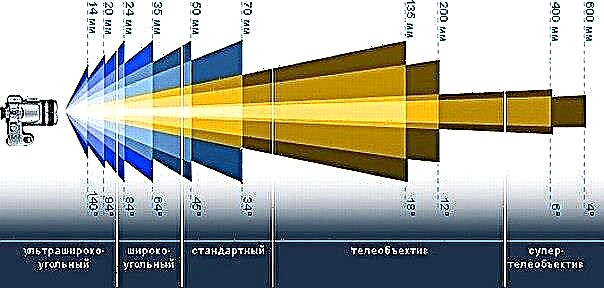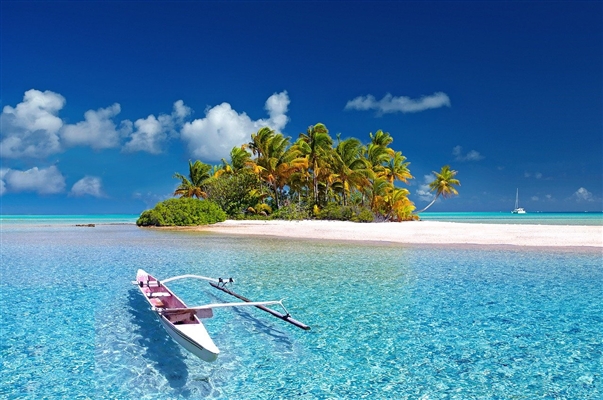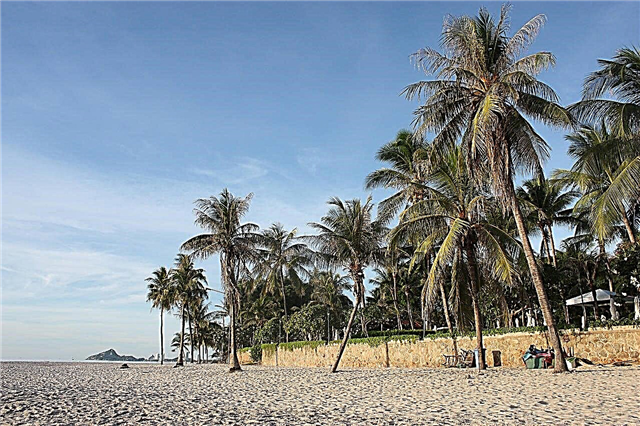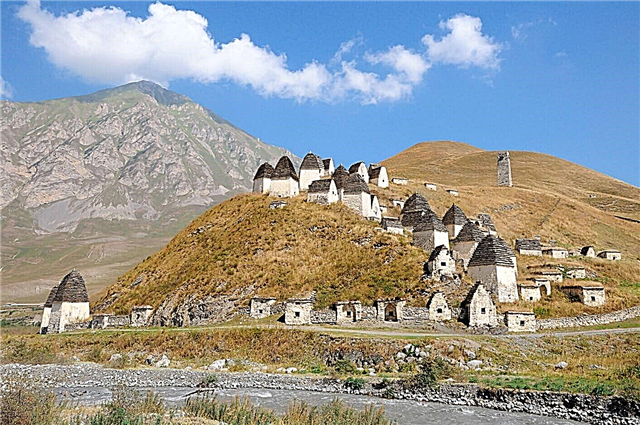The main treasures of North Ossetia are picturesque natural landscapes, unique historical and architectural monuments and ancient settlements that have preserved the energy of those who once lived here. The real gems of the region are its gorges. Tseyskoe, Karmadonskoe, Kurtatinskoe. They fascinate with their wild beauty and attract numerous outdoor enthusiasts.
Those wishing to get to know the rich history of the Ossetian region should definitely visit the Dzivgis rock fortress, the Dargav necropolis, ancient sanctuaries, the mountain villages of Tsamad, Tsymiti, Lats. The republic is also famous for its ancient temples. Most of the population adheres to Orthodoxy, but here you can also find buildings of other religions and confessions. Notable examples are the Sunni mosque and the Armenian church.
The most interesting and beautiful places in the region
What to see and where to go? List of the best objects of cultural tourism and outdoor activities!
Midagrabin waterfalls
The main attraction of the Midagrabin mountain valley, located on the border with Georgia. From the surrounding mountain peaks, 8 snow-white multi-cascading waterfalls fall down. They have been known for a long time, but only in 1995 it turned out that one of the waterfalls - Big Zaygelan - is the highest in Europe. Its height is 750 m. The waterfalls are pulsating, their fullness depends on the ambient temperature. Tourists are advised to have a passport as it is a border area.

Tseyskoe gorge
A magnificent corner of nature. It is located at an altitude of 1300 m, the length from east to west is 23 km. It is famous for its healing mountain air, beautiful snowy peaks and glaciers, waterfalls, mixed forests, thermal springs. The steep slopes are attractive for climbers and skiers. There are cable cars, hotels and climbing camps. Popular excursions to Mount Monk, Tseyskiy and Skazskiy glaciers, the ancient sanctuary of Rekom.

Monument to Uastyrdzhi
A unique monument in honor of the patron saint of men-soldiers and travelers, revered by Ossetians, whose image echoes with George the Victorious - an Orthodox saint. Installed at the beginning of the Alagir gorge, on the side of the Transcaucasian highway. A gigantic bronze figure of a rider on a horse breaks out of a rock at a height of 22 m. It seems that it is simply hovering above the ground. The monument was erected in 1995, the author was the famous sculptor Nikolai Khodov.

Recom
A sanctuary in the form of a log hut on the banks of the Tseidon River in the Tsei Gorge. One of the most revered in North Ossetia. The ancient deity Rekom was considered by the local population to be purely "masculine". They asked him for a successful hunt, rich harvest, protection. The house has 2 rooms, one of them is a prayer room, the other contains broken arrows. Only men can get inside the sanctuary, and only twice a year - during certain holidays.

Dargav necropolis
It is located in the Dargav Gorge, on the side of a mountain, in the vicinity of the village of the same name. Historical monument. The famous "City of the Dead". It consists of hundreds of stone crypts resembling small houses with black tiled roofs. This method of burying the dead was practiced by local residents until the 18th century. And the very first ground burial grounds appeared here in the 9th century. Watchtowers have been erected along the perimeter of the necropolis.

Karaugomsky glacier
It is located in the Karaugom gorge, on the territory of the Alania park. Natural monument. The total length is about 13 km. One of the largest glaciers in the entire Caucasus. It descends to an altitude of 1830 m and wedges into the forest - this is the only glacier located so low. Has two icefalls. The upper one flows down from the peaks of the Karaugom ridge with a height of 3500 m, its tongue is 800 m long. The tongue of the lower icefall is about 500 m. The mountain river Karaugomdon begins from here.

Castle "Fregat" in the village of Khanaz
It is located on the territory of the Digorsky gorge. A cultural monument of federal significance. A rare example of mountain architecture of the XIV-XVI centuries. Consists of a residential tower and outbuildings built to defend against enemies. Located at an altitude of 2000 m above sea level. The view of the castle is formidable and majestic even today. It really resembles a frigate cutting air waves. The walls of the tower are dotted with loopholes. There is a stone basement where the prisoners were probably kept.

Ahsinta canyon
Natural monument. Gateway to Digoria. A narrow crevice in the Rocky Range, 1 km long and 2 to 15 m wide, along the bottom of which the Urukh River flows. The sheer canyon walls are formed by Jurassic limestone cliffs. Several karst springs fall along them into the raging river, turning into beautiful frozen waterfalls in winter. The depth of the canyon is 100-150 m. A bridge, popularly called the Devil's, is thrown across it. It leads to the abandoned village of Didinata.

Dzivgis cave fortress
It is one of the most powerful fortification complexes in the Caucasus. It is located in the village of Dzigvis, on the slope of the majestic Kariu-khokh mountain. Consists of 6 towers with loopholes, attached at different heights to the entrances to natural caves. The main fortification is located at the foot of the mountain. Communication with other towers - along the paths carved in the rocks. Age - 700 years. Also worthy of attention in Dzigvis are medieval crypts, ritual pillars and a sanctuary.

Grove of Khetag
A relict forest with an area of 13 hectares. It is located in the Alagirsky district, 30 km from Vladikavkaz. A sacred place for Christians. It is connected with the legend about the son of the Kabardian prince Khetag, who did not want to convert to Islam and hid from his pursuers in the depths of the forest thicket. There is a prayer house and places for offerings. Every July Ossetians celebrate the national holiday Khetag. It is forbidden to make fire, drink, break branches and take out anything in the forest.

Mykalgabyrta
One of the three main and most ancient sanctuaries on the Ossetian land. Located in the Alagir Gorge. The cult of the deity of abundance and fertility was especially revered among the local population. They turned to him with requests for a rich harvest, increasing the herd, getting rid of diseases. To this day, every year in September, the holiday of Mykalgabyrta is celebrated in Ossetia. Locals of all ages come to the sanctuary with offerings and offer their innermost prayers to God.

Tsey ski resort
A popular recreation area in the Tsey Gorge, in the valley between the Kalperovsky and Tseysky Ridges. It is always sunny here, there is no wind, the snow is dry and loose, it lasts until April. There are tracks of several levels of difficulty for snowboarders and skiers. The total height difference is about 1 km. There are 7 lifts in operation. Many tourist centers, hotels, boarding houses have been built. In addition to skiing activities, forests, rivers and waterfalls, mountain air, and well-developed infrastructure contribute to a good rest.

Skaz glacier
One of the largest and most accessible glaciers in the Tseyskiy gorge. It descends from the Skazsky pass 3910 m high between two peaks - Lagau and Adai-Khokh. The total length is about 3 km. According to experts, it retreats on average by 5 m per year. There is a grotto at the very bottom of the glacier. The mountain river Skazdon begins from here. Its waters rush rapidly downward, forming rifts. You can climb to the glacier by cable car. The distance of 1600 m is covered in 20 minutes.

Alansky Assumption Monastery
It is located in the mountains of the Kurtatinsky gorge, in the village of Khidikus. Orthodox, male. The highest mountain in Russia. Founded in 2000. The monastery complex was built in the Byzantine style of gray stone with red tiled roofs. There are two churches, a fraternal building.A few kilometers from the monastery there is a chapel that contains a copy of the icon of Our Lady of Mozdok, the main shrine of the North Caucasus.

Table mountain
Located on the border with Ingushetia. It is clearly visible from Vladikavkaz, is present on its coat of arms. It has an altitude of about 3000 m - it is one of the largest peaks on the Rocky Range. It resembles a table in shape, has a flat top and steep steep slopes. The remains of numerous ancient sanctuaries have been preserved on the mountain. There are hiking trails that do not require special training. The most convenient - the “ancestor trail” - starts from the side of Ingushetia.

Vladikavkaz zoo
In a small cozy corner, animals from all over the world are collected, including exotic and listed in the Red Book. Their collection continues to grow. Pets live in spacious cages and aviaries, they can be fed. There is a poultry house and a terrarium. The territory of the zoo is decorated with wooden figures of animals, many of the corrals are brightly decorated. Happy holidays are held for children. A visit to the zoo can be combined with a visit to the nearby children's railway.

Karmadon gorge
An amazingly beautiful and at the same time dangerous place, at an altitude of 1 km above sea level. It gained notoriety in 2002 after the collapse of the Kolka glacier and an avalanche that overnight buried the village of Upper Karmadon and 120 people, including the group of Sergei Bodrov. Today, the area is cleared of rubble, a new road is being built to bypass the dangerous territory. A huge monument to all the victims was erected near the site of the tragedy.

Mukhtarov Mosque
It was built at the beginning of the last century on donations from believers, as well as M. Mukhtarov, a well-known oil industrialist and philanthropist in the Caucasus. Architectural monument. The magnificent structure is very similar in style to the Cairo mosques of the X-XII centuries. It is decorated with a large dome, 2 slender 33 m high minarets with gilded crescents, a pointed arch with a balcony. In Soviet times, the mosque housed a museum. In 1996 it was returned to the Muslims of North Ossetia.

Church of the Nativity of the Blessed Virgin
It was founded at the beginning of the 19th century and is considered the oldest Orthodox church on the territory of the republic. It rises on the Ossetian Hill. In Soviet times, the bells and the dome were removed, and the building itself was occupied by a school, then a museum. In the 90s, the temple was returned to the parishioners and restored. And today its blue and white facades look fresh and elegant. On the territory there is a necropolis with the graves of famous residents of North Ossetia, heroes of the Caucasian wars.

Church of St. Gregory the Illuminator
The red-brick building with narrow windows, a high bell tower and gray domes was erected in the second half of the 19th century. Belongs to the Armenian Church. It was built on donations from parishioners from the Armenian diaspora. Count M. Loris-Melikov, a prominent statesman of those times with Armenian roots, made a great contribution. In 2011, the temple was reconstructed, during which an altar was discovered, presumably created at the beginning of the 19th century.

Memorial of Glory
The official opening of the memorial complex in honor of the Great Victory over Germany took place in 2005. The high central column is wrapped in a ribbon with high reliefs depicting the exploits of the Ossetian people during the war years. At its top is a statue of St. George. The large-scale mosaic panel depicts battle scenes. Nearby there is a sculptural composition on the theme of the annexation of Ossetia to Russia called "Ambassadors at the Empress's."

Art Museum named after M. S. Tuganov
Museum expositions are housed in a beautiful two-story mansion, which was built at the beginning of the last century and is a historical and architectural monument. The museum was founded in 1939. There are about 6000 exhibits in its funds. These are works of Russian and foreign artists and sculptors. A separate exhibition is dedicated to the contemporary art of Ossetia. In 1992, the museum's collections were replenished with paintings and personal belongings of the famous Ossetian master of painting and graphics Makharbek Tuganov.
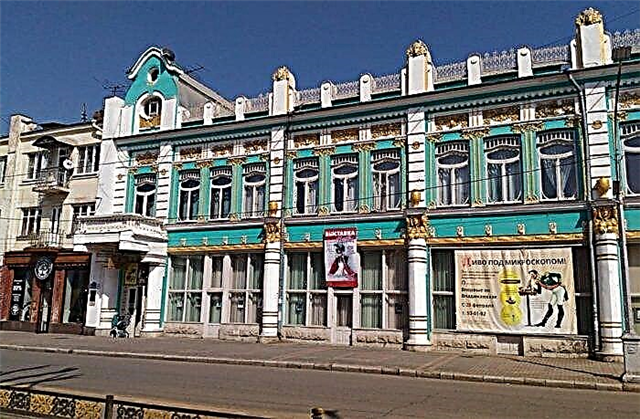
St. George Cathedral
It was erected 3 km from the center of Vladikavkaz, on the site of an old Russian cemetery. The project of the building is made in the Russian-Byzantine style. The temple of Michael the Archangel, completely destroyed during the revolution, served as a model. The opening of a new cathedral with 5 domes and a hipped-roof bell tower took place in 2003, interior decoration work continues. The relics of St. George the Victorious are the main shrine of the temple. A library, a private Orthodox gymnasium, and a children's Sunday school are open for parishioners.

Alania National Park
The picturesque alpine park in the south-west of the republic was founded in 1998. Located at an altitude of 800-4650 m above sea level. Has an area of 55 hectares. The main territory is occupied by rocks, talus and glaciers, a fifth - forests. The main waterway is the Urukh River. Among the inhabitants there are 34 species of mammals and more than 100 species of birds. Many attractions: Tan glacier, Chifandzar mountain bog, Galdoridon waterfall, medieval towers, caves, catacomb burial grounds, sanctuaries.

Galdoridon Falls
It is located in the Hare Gorge, on the territory of the Alania Park. A mountain white-foam stream with a roar falls from a cliff 30 m high, forming 5 cascades. At the foot of the waterfall, a bowl of black shale and granite is formed with a diameter of up to 10 m. There is a platform for recreation and viewing of local landscapes nearby. Other names of the waterfall are Zhemchuzhina and Kroshkina, in honor of the climber who died in these places. One of the most popular tourist routes leads to the waterfall.

"Trail of Miracles" in Kadargavan
The narrow Kadargavan canyon in the Kurtatinsky gorge is one of the natural wonders of North Ossetia. Its depth is 60 m, width is no more than 3 m. Above the precipice, along one of the walls of the gorge, there is a trail with railings, walking along which you can enjoy the local landscapes. Interesting objects are encountered along the way: a giant boulder hanging between the rocks above a rumbling mountain stream, the Sword of the Bloodlines sticking out of the stone, cages with wild animals.

Memorial complex in Beslan
Beslan School No. 1 has turned into a memorial where people come to bow to all the victims of the terrorist act committed here in September 2004. The site of the tragedy is a gymnasium with broken windows, peeled walls with bullet holes, and charred ceiling beams. There are photographs on the walls, a cross in the center, and flowers, water bottles and toys near it. Among those killed in the school are 186 children. Around the hall there is a golden frame in the form of a commemorative wreath.

"City of Angels"
The memory of the numerous victims of the Beslan terrorist attack resonates with pain in the heart of every inhabitant of North Ossetia. A memorial complex called "City of Angels" is dedicated to this tragedy. There are graves with monuments made of pink granite in which the deceased children, parents and teachers are buried. A monument to the special forces who died during the liberation of the school was erected, as well as a monument to the Tree of Sorrow in the form of female figures holding angel children in their arms.

Monument to the Kurtatin Warriors
An unusual monument is located at the entrance to the village of Verkhniy Fiagdon. It was installed for Victory Day in 1971. Dedicated to soldiers who came from the Kurtatinsky gorge, who did not return from the front to their native mountains in 1941-45. The immense grief of mothers and wives for the dead is embodied in the image of a lonely yearning horse, bowing its head low. The author was the local sculptor D. Tsoraev. The monument is installed on a small hill and is visible from afar.

Tsamad village
Alpine settlement founded in the 13th century. It is located 66 km from Vladikavkaz, at an altitude of 1 km above sea level. Today, almost no one lives here, although at the beginning of the last century the population of the village was about 700 people. Ossetians believe that this is where their ancestors originated.The main attraction of the village is the ancient tower and the ruins of the fortress walls. This is all that remains of the once impregnable defensive fortress of the Cherchesov family.


